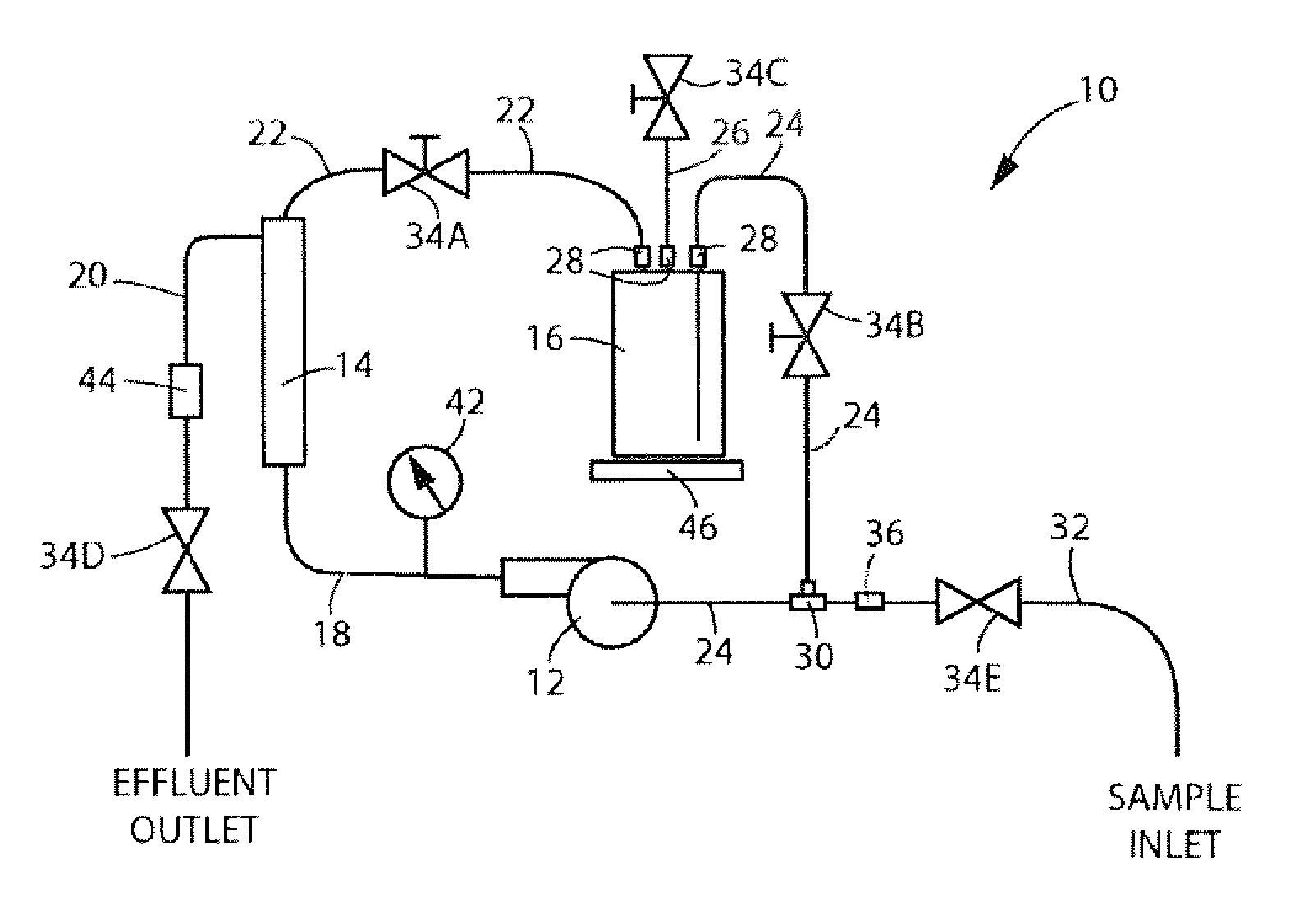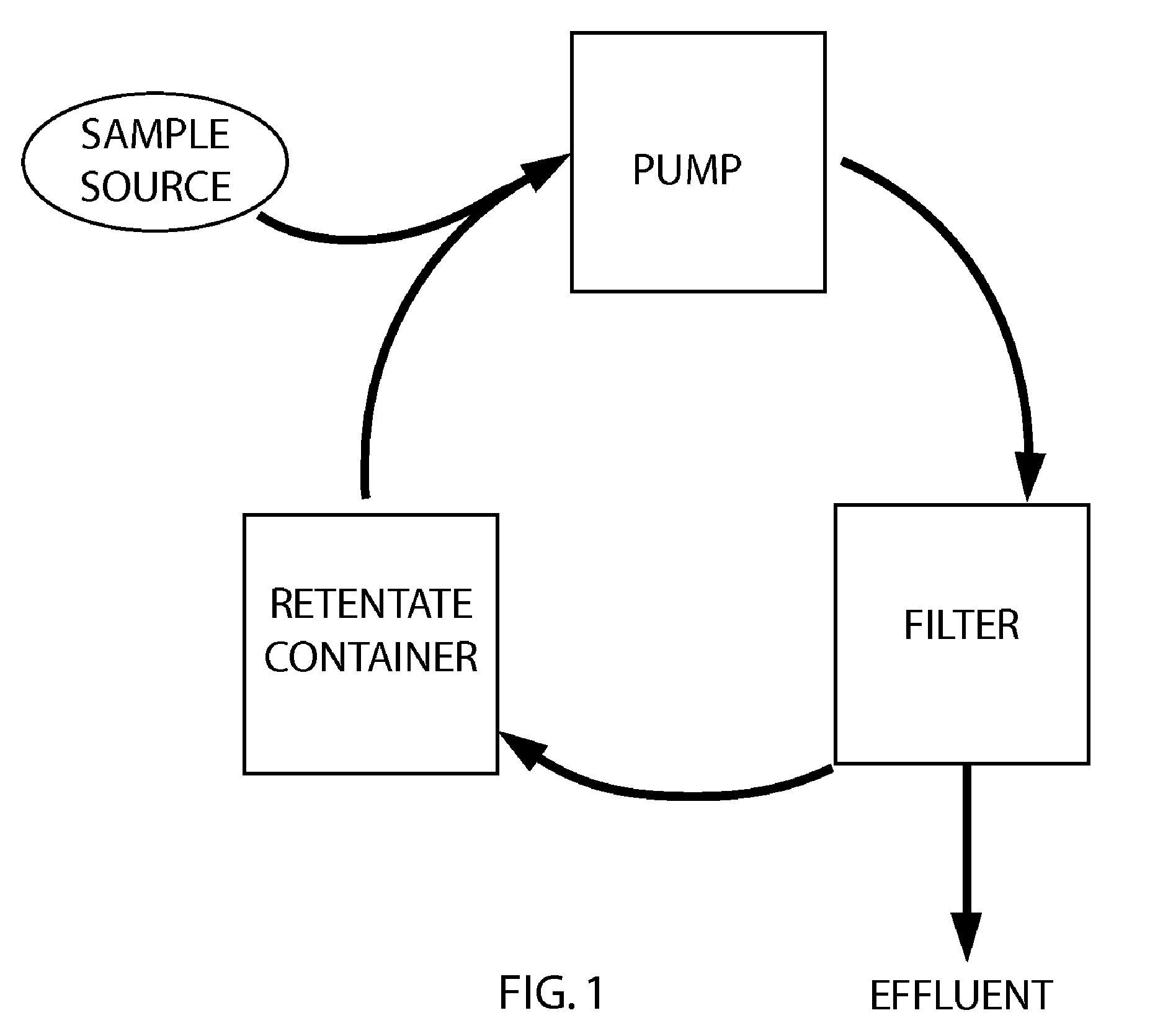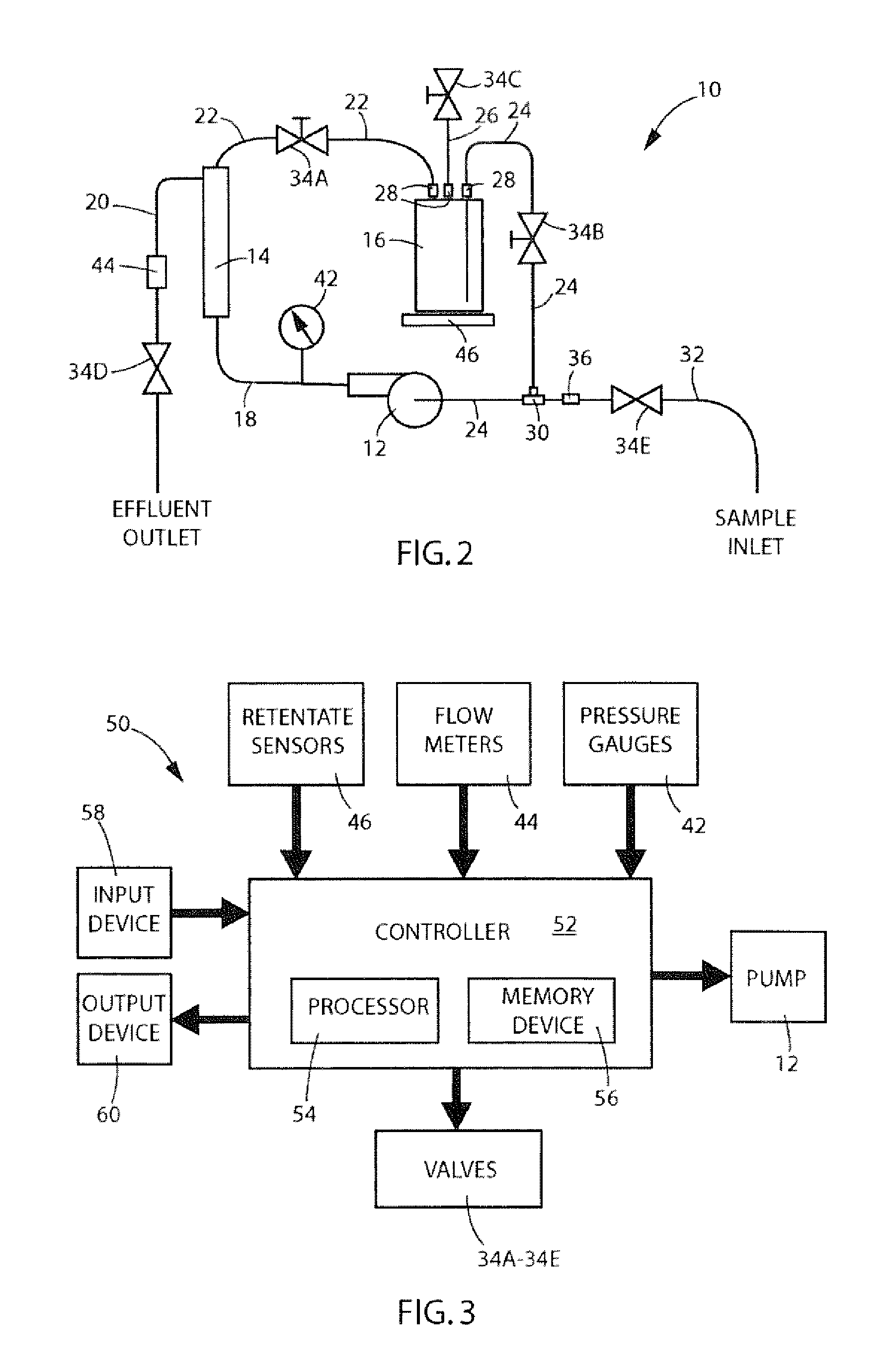Systems and methods for the detection of low-level harmful substances in a large volume of fluid
a technology fluids, applied in the field of systems and methods for the detection of low-level harmful substances, can solve the problems of difficult detection of harmful substances using conventional methods, inability to test sample size used in conventional detection methods, and inability to detect certain microbial pathogens. to achieve the effect of reducing the volume level of retenta
- Summary
- Abstract
- Description
- Claims
- Application Information
AI Technical Summary
Benefits of technology
Problems solved by technology
Method used
Image
Examples
Embodiment Construction
[0023]Several of the illustrations presented herein are not meant to be actual views of any particular sample concentrator system or apparatus, but are merely idealized representations which are employed to describe the present invention. Additionally, elements common between figures may retain the same numerical designation.
[0024]A harmful substance is any substance harmful to any living organism, preferably humans, and without limitation whether such substance may be characterized as a pathogen, contaminant, a toxic substance, a substance artificially introduced into the fluid, or a naturally occurring substance. Preferably, the harmful substance is a pathogen. More preferably, the harmful substance is the causative agent for diseases such as tularemia, anthrax, smallpox, bubonic plague, viral hemorrhagic fevers, brucellosis, glanders, melioidosis, psittacosis, Q fever, salmonella, shigellosis, Typhus, staphylococcal infections, Viral encephalitis, cholera, cryptosporidiosis, E. c...
PUM
| Property | Measurement | Unit |
|---|---|---|
| volume | aaaaa | aaaaa |
| volume | aaaaa | aaaaa |
| volume | aaaaa | aaaaa |
Abstract
Description
Claims
Application Information
 Login to View More
Login to View More - R&D
- Intellectual Property
- Life Sciences
- Materials
- Tech Scout
- Unparalleled Data Quality
- Higher Quality Content
- 60% Fewer Hallucinations
Browse by: Latest US Patents, China's latest patents, Technical Efficacy Thesaurus, Application Domain, Technology Topic, Popular Technical Reports.
© 2025 PatSnap. All rights reserved.Legal|Privacy policy|Modern Slavery Act Transparency Statement|Sitemap|About US| Contact US: help@patsnap.com



